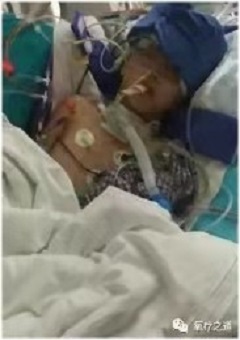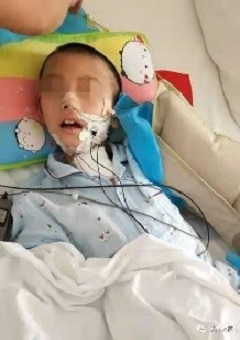Craniocerebral Trauma Cases
Example 2
Craniocerebral trauma is a major public health problem in our country. Whether an injured person can receive timely and effective treatment directly affects the life and recovery of the patient. On the basis of comprehensive treatment for brain trauma, hyperbaric oxygen therapy should be carried out as soon as possible, which can promote the patient's recovery and reduce permanent dysfunction, and has a positive therapeutic and preventive effect.
A 9-year-old boy was knocked down by a large truck and was immediately unconscious. After examination, he was diagnosed with a severe brain injury. Surgery was performed in the emergency department, and he remained unconscious for 22 days after the operation. Hyperbaric oxygen therapy can improve the diffusion capacity of blood oxygen, improve cerebral edema, reduce intracranial pressure, and promote the recovery of cognitive function.Theoretically, it can reduce blood viscosity, increase the blood supply of the vertebral artery, improve the hypoxic state of the brainstem and reticular activation system in the midline, thereby reducing seizures. The department of hyperbaric oxygen was invited to consult to see that the child had atelectasis, which was a relative contraindication to hyperbaric oxygen treatment, and the intracranial pressure was higher than the normal range, and had seizures after admission, which is at greater risk.

After informing the family of the risks of hyperbaric oxygen therapy and obtaining informed consent, the child was treated with hyperbaric oxygen therapy on the same day. The cabin was opened separately and the decompression time was extended to avoid large fluctuations in intracranial pressure and brain herniation. After 15 times of dehydration to lower intracranial pressure and hyperbaric oxygen therapy, the child was re-measured to normal intracranial pressure, recovered consciousness, and responded.
After the child's consciousness was fully recovered, his memory, understanding, and calculation skills were poor. After being discharged from the hospital, he continued to receive hyperbaric oxygen therapy. At this stage, hyperbaric oxygen therapy increases the speed of nerve regeneration and the number of axon regeneration, thereby promoting nerve cell repair and reducing the complications and sequelae of brain trauma. After a total of 181 hyperbaric oxygen treatments, the child returned to the hometown and resumed school. All subjects were excellent at the end of the semester.

We treat hundreds of patients with traumatic brain injury every year. According to clinical observations, in the acute period of 1 month after the patient's injury, the earlier the intervention of hyperbaric oxygen therapy, the more significant the effect. Our statistics found that with hyperbaric oxygen therapy within 10 days after injury, the recovery rate of patients exceeded 90%.For patients with brain trauma, the timing of hyperbaric oxygen intervention is the key to the treatment effect and prognosis. It is recommended to implement it as soon as possible after excluding contraindications such as active bleeding and intracranial gas.
Author: Department of Hyperbaric Oxygen, Xiangya Hospital, Central South University
Wu Fengjing 、Kuang Xuyuan
Prev : Facial Treatment Case
Next : Cancer and Oxygen







